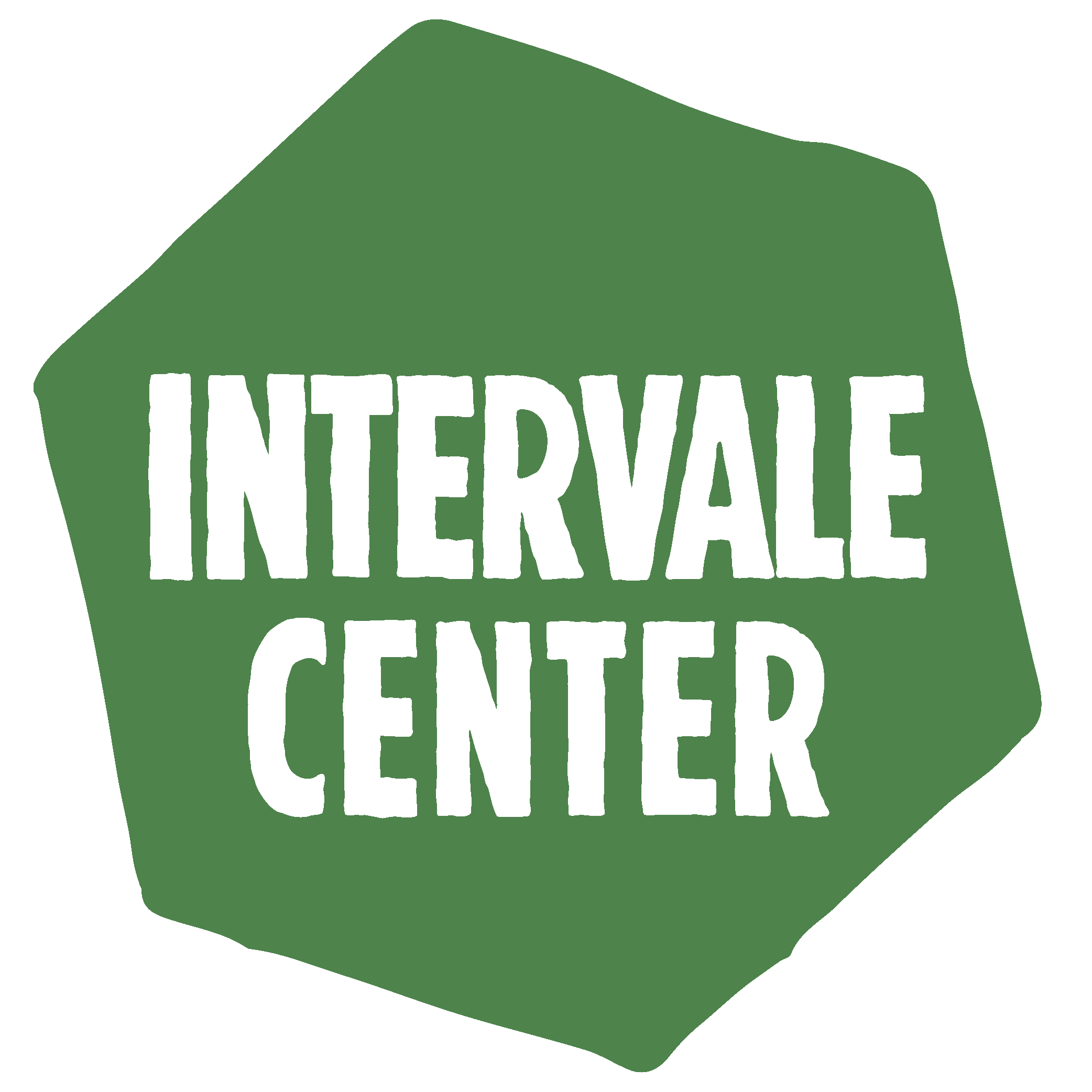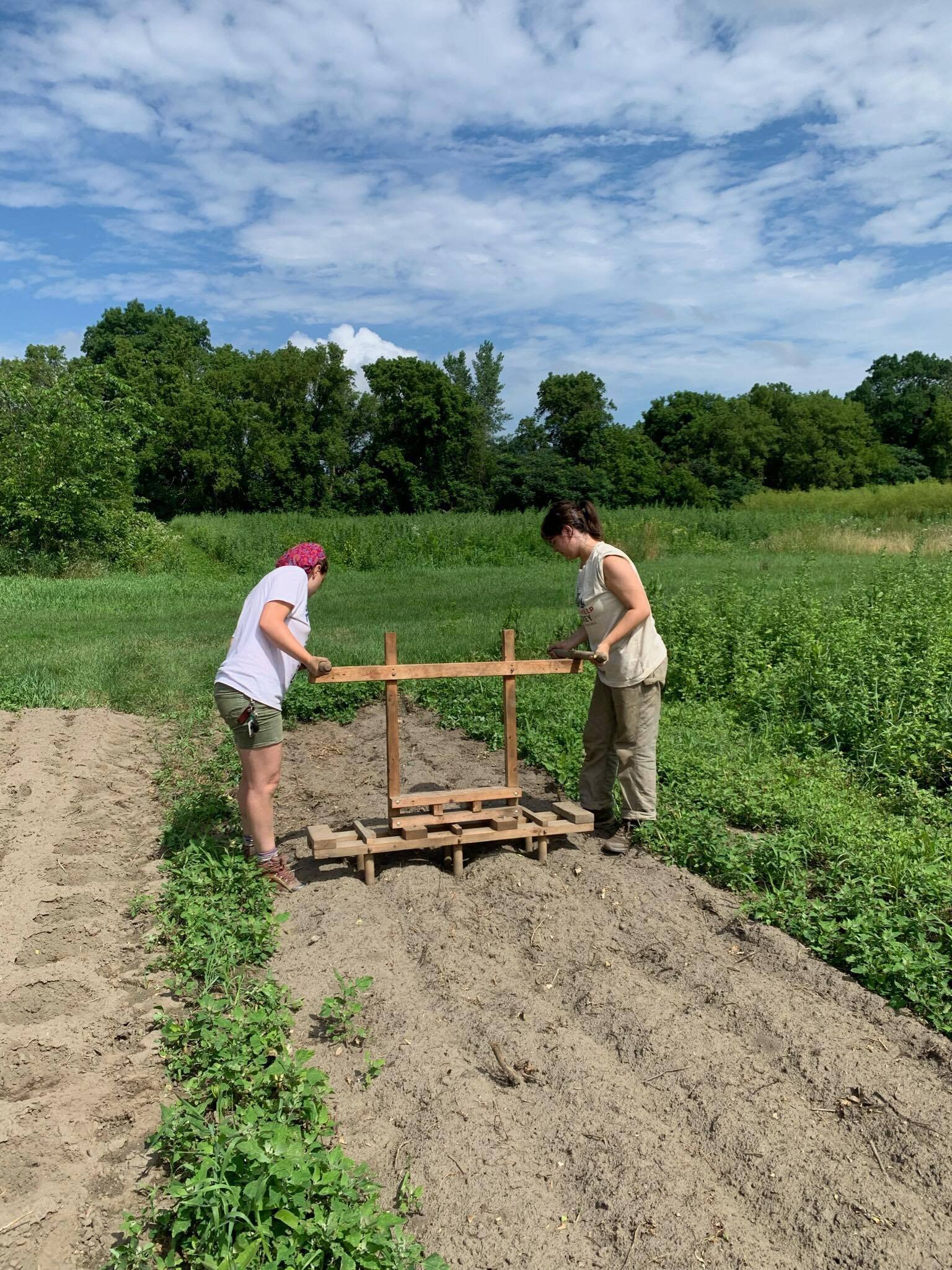Conservation Efforts through Burlington Wildways
We were fortunate in our internship with Burlington Wildways to be able to have hands in many pots in the Burlington conservation community. We met a diverse array of skilled professionals and participated in many projects and ongoing efforts, such as native tree plantings with the Intervale Conservation Nursery, gleaning with the Intervale Center’s food access staff and participating in weekly volunteer groups tackling invasives, led by Duncan Murdoch, Intervale Center’s Natural Areas Stewardship Coordinator. In addition to the freedom to do experimentation with invasive plant eradication, including trying our hand at goat care, our internship evolved into a very rewarding experience.
Our first brainchild of the summer was developing an experiment to inform best practices surrounding goutweed eradication. Goutweed is a small, low growing plant with leaves that are comprised of three groups of three leaflets and can be green or variegated. We selected four plots, each 10x10 ft. and sectioned them off with twine and stakes, three at the Intervale and one at the Ethan Allen Homestead and paired them with four corresponding treatments:
1. Smothering: Using compression and lack of sunlight/water to stress goutweed (Intervale)
2. Solarization: Using sunlight to create an unfriendly environment for goutweed (Intervale)
3. Competition: replanting with Virginia Waterleaf, Ostrich Fern and Sensitive Fern (Intervale)
4. Natural “herbicide”: a solution of vinegar, salt and clove oil to superficially stress above ground vegetation (EAH)
Once these treatments are applied, they must remain in place for a significant amount of time. We plan to make initial assessments this Fall, despite enacting these treatments in June.
One of the most exciting projects Libby, Nora and I developed this summer involved borrowing goats from Pine Island Community Farm to test the effectiveness of grazing on Goutweed vitality. We borrowed three, pregnant, female goats and installed an electric fence in Mackenzie Park, taking turns monitoring the feeding behavior of the goats. The goats seemed lukewarm about goutweed but the feasibility of implementing the experiment itself has opened up possibilities of recreating the experiment in different sites with different plants!
This past summer we also tested out the idea of using invasive plants in culinary adventures. Using plants holistically was a concept that appealed to all of us, a way to separate ourselves from rote weeding. Each week we chose a recipe, often using Russ Cohen, naturalist and wild foods enthusiast, as inspiration. Then we would forage at the Intervale, prepare our dish and then table at the Fair Share CSA, prepared with brochures explaining our process and helpful plant ID information. We made Japanese Knotweed Strawberry Crumble, Garlic Mustard Pesto, and many others. We hoped that by disseminating this knowledge we might inspire people to forage and cook themselves, participating in conservation work with the goal of nourishment.
Moving forward into the new season, we are concentrating our efforts on continuing to create new invasive plant recipes, as well as dabbling in the world of making Knotweed paper. As you would expect when learning a new skill, particularly one that is both niche and unorthodox, there is a significant amount of trial and error! Nevertheless, we are enjoying the journey and eager to learn from whoever we encounter.
Written by Wildways Interns: Marjorie McWilliams, Nora Laymon, and Libby Rhodes







